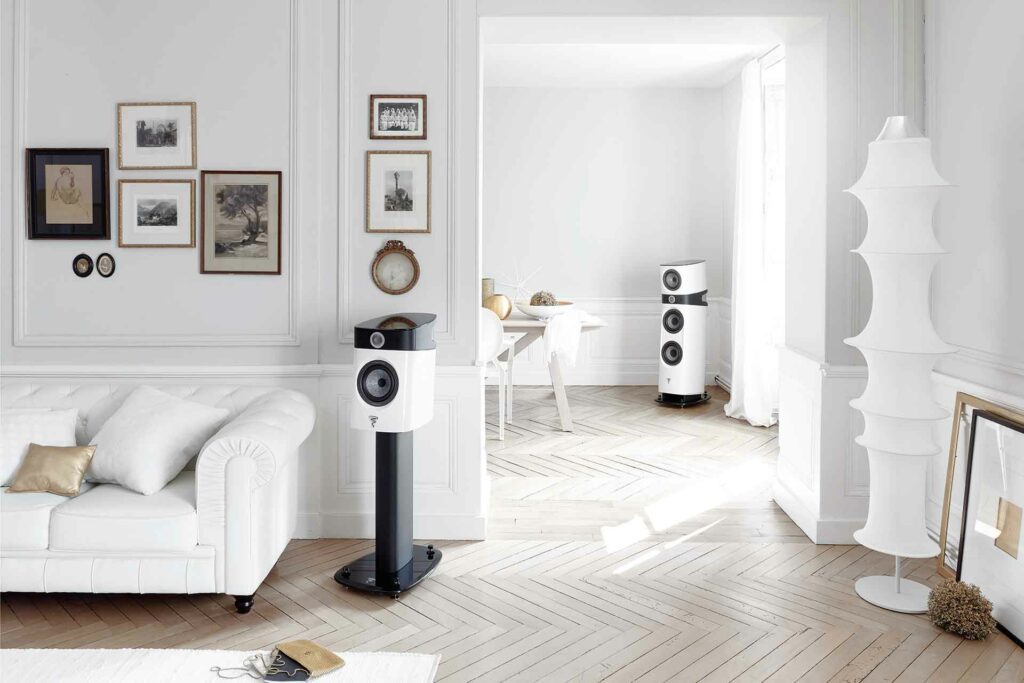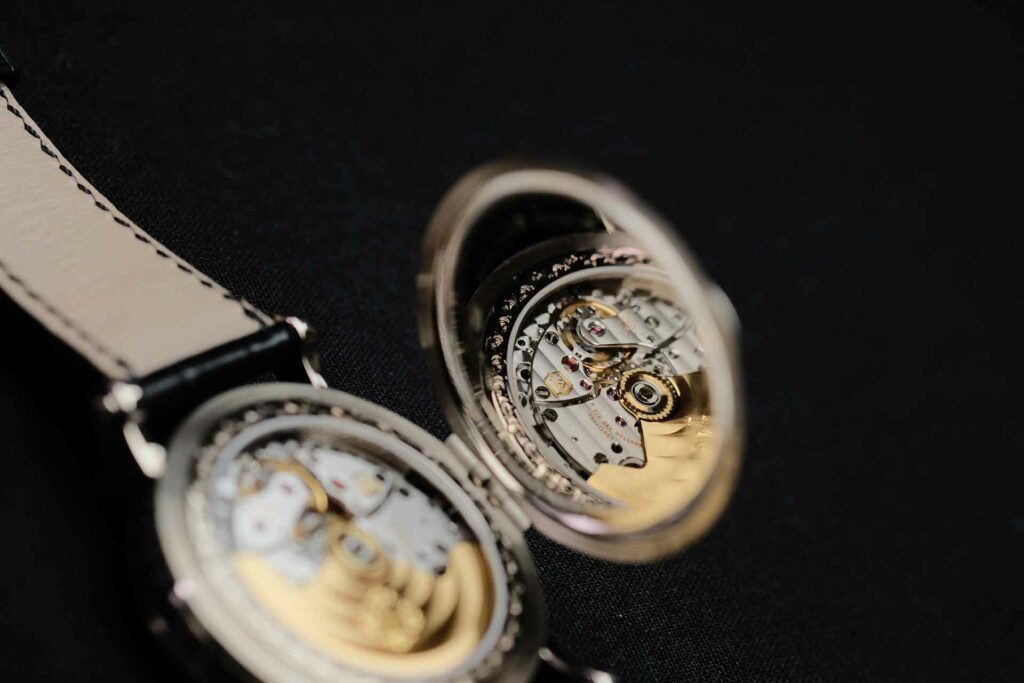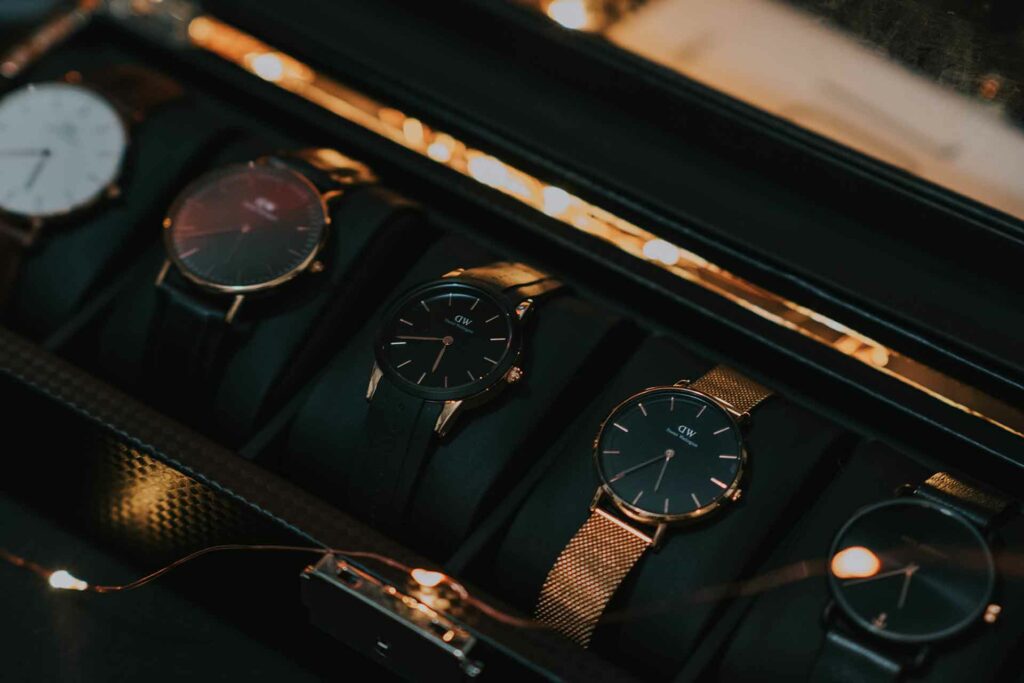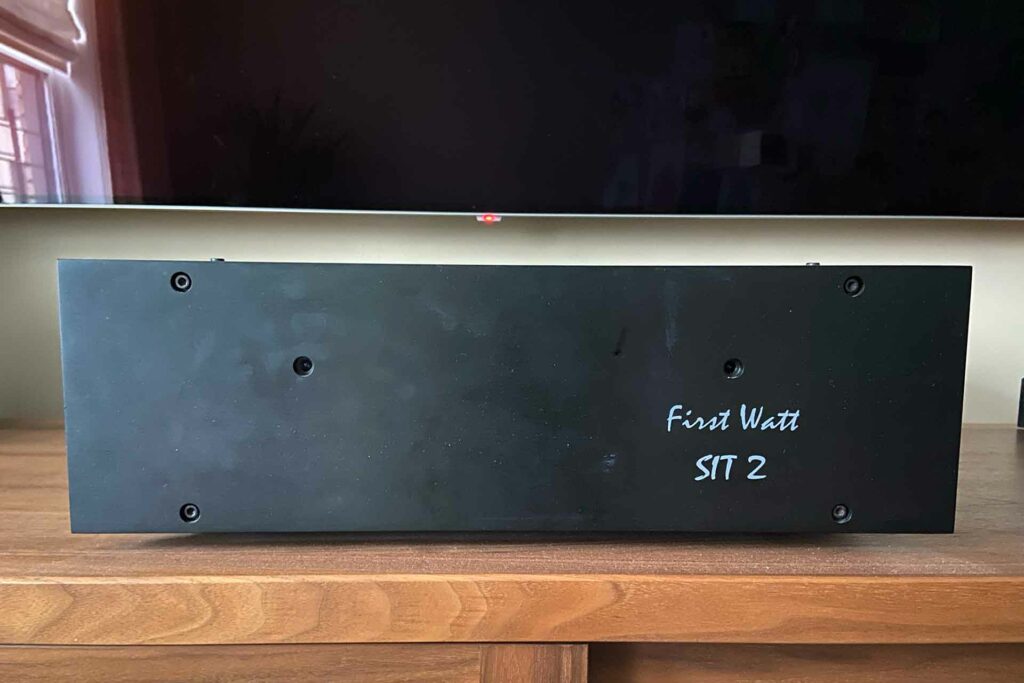Things have changed quite a bit in the audiophile world as compared with just a few years ago when I left the business to try my hand at being an executive at a publicly traded Fortune 500 company. The pink elephant in the room of the hobby (meaning: the aging demographics) is at least being discussed as opposed to simply being ignored by the audiophile establishment. Most audiophile companies today give at least a verbal energy to finding younger and more diverse customers even if that is the path less traveled.

Many A-list audiophile brands often put tremendous pressure on their designers and perhaps even more so on their sales teams to make more and more money and that often comes by looking for the lowest hanging fruit to pick. The easy strategy to accomplish that goal is to make and sell more and more expensive products and sell them to older audiophiles who, out-of-nowhere and especially thanks to the COVID pandemic, had a lot more time to listen to music. One industry executive recently explained the phenomenon fantastically by describing the septuagenarian audiophile as a “client on a conveyer belt that is going up and up. As time goes on, the prices increase. And that makes up for the lower volume product demand because what happens to the client at the end of the rising conveyor belt? He dies.” Everybody involved with the business knows that this model isn’t sustainable for more than five to 10 more years, but how many have the intestinal fortitude to do something about it?
Now, before you warm up a nice bath for you and your Wüsthof chef’s knife, let me talk you off the ledge because things aren’t as depressing as they may seem. In fact, there is a clear light at the end of the tunnel here. Allow me to explain…

Let’s agree that, historically, the audiophile industry isn’t very accepting of any kind of change as a whole. Today, the “elders” at the print magazines are still laser-focused on vinyl at their audio-Jesus, despite having access to every recording ever made at CD (or higher) resolution for $15 per month from any number of excellent services, be it Tidal, Qobuz, Apple, or Amazon Music. In a world where there are ultra-cool-running high-powered Class-D switching amps, tube amps are still an audiophile fan favorite. Beyond that, there are a few loud but minority voices that are yammering foolishly on YouTube.com about how their 1970s “vintage system” is better than your modern audiophile system. No it isn’t and it isn’t even close. They are using YouTube.com and Facebook as if they were a Russian operative in the 2016 election (or 2020 election to be accurate) to breed negative thoughts in audiophiles’ minds because if we’ve learned anything about the Internet, it is the more you go negative, the more money you make. This goes for publications, TV channels, bloggers, YouTubers, and influencers alike. I know someone making a solid six-figure living online in the audio business who goes negative quite often with their narrative. This person doesn’t have to sell ads thanks to the YouTube.com business model, they just need to create some juicy controversy. The above vintage audio system or the Mo-Fi scandal are good examples of such fuel to the fire. Can I pivot the other direction for a bit? I sell advertising quite nicely and I don’t need to prove Facebook whistle-blower Francis Haugen’s point. There is upside here people.
Let’s dig into the And/Or problem for audio versus other luxury or enthusiast products as it is the core of what is wrong with the hobby but it is starting to right itself finally. If you are a watch enthusiast and you have a Rolex but find a Patek Philippe that you just love, does the Rolex get sold to buy the Patek? Not a chance. You simply add another watch to your collection. If you are a scotch lover, as I explained to my industry friend, Roy Hall of audiophile importer/brand Music Hall recently, when you polish off that gorgeous bottle of Balvenie 21 Port Wood Cask aged, single malt scotch, what do you do? You buy another one. Those are examples of “And” hobbies.

If you own a beefy Krell amp but have developed a hankering for some tubes from Minnesota, you will want an Audio Research amp, right? What’s the first thing that most of us audiophiles do? We go on Audiogon.com and list their Krell and then buy the Audio Research amp. That is how we ended up with an “Or” hobby as audiophiles. I’ve written this story before in my old publications. You’ve heard it before. What’s exciting now is that things are changing with the younger and more diverse audiophiles.
Most recently this came to my attention, as I have been researching the possible launch of FutureAudiophile.com by studying and interacting with people on a number of well-subscribed audiophile Facebook groups – in this case, I am specifically speaking of high-end headphones. CAN JAM is the one of best place these days to find this younger, more diverse audio-loving audience and – like watch collectors – these headphone enthusiasts are collecting headphones more than constantly upgrading them. These headphone guys buy headphone stands and display their headphones like watch people do with their watch winders. They collect all sorts of different headphones ranging from IEMs (in-ear monitors) to open-back, wired headphones to over -ear Bluetooth models. They might pick up a pair of Japanese electrostatic cans while also investing in very low-cost Chi-Fi earbud products. And don’t forget the electronics, as these new school audiophiles might own a few DACs for their headphones to go with both solid state and tube-based headphone amps. This, my friends, is what an “And” hobby looks like, and audio has never had this before.

While at the Capital Audiofest show in November of 2022, I talked to a few, seasoned audiophile company executives about the phenomenon of Chi-Fi and –amazingly – many didn’t know what the hell I was talking about. In case you are in that camp, Chi-Fi (explained) stands for Chinese-made audio gear that is often sold via Amazon, a few specific audiophile catalogs, or direct from the brand’s own, sometimes dicey websites. Prices are hard-to-believe low, but performance can be way-better-than predicted if you are willing to roll the dice. Is there risk? You are damn right there is, but the low cost gets these consumers back in the game more and more often. Younger audiophiles simply love this class of gear, because unlike the mostly high-four-figure and well into the five-figure components that I saw at Capital Audiofest in nearly every room, Chi-Fi is actually attainable. You can actually dream of owning this stuff. And what happens if it breaks? Who cares? Throw it away or, better yet, recycle it and move on.
Do these younger headphone and burgeoning two-channel enthusiasts upgrade like us long-time audiophiles? Sure they do, but it isn’t always as linear as it was for us in the past. They want lots of products to play with as part of the hobby. They might sell blood in their spare time to own a pair of Focal Sopra No. 2 floorstanding speakers but they may also pop for a pair of the new $1,000 Magnepan speakers that are thin and easily moved as well as stored when the urge to listen to planar speakers passes. I know a 51-year-old Wall Street executive who lives with his wife and young son in a pre-war, barely-950-square-foot co-op on the Upper East Side in Manhattan. He, like me, is a super-fan of Nelson Pass’ amp designs. He owns a First Watt “kitchen table” amp from Nelson’s passion project brand. He also owns a Pass Labs 35-watt, pure Class-A power amp that is part tube-killer and part room heater that comes out only in the winter when the heat from said awesome-sounding amp is welcomed. He is an “And” audiophile hobbyist.

The idea that audiophile gear has to be bat-shit-crazy expensive needs to fall off the end of that conveyer belt that we were talking about before the founding generation gets there, please. I walked the show outside of D.C. with writer and reviewer Paul Wilson, and we had to ask a tricky question in a few rooms: “how much?” One fellow running a demo put up his fingers up to signal 45 with his fingers, which prompted a follow up question from a smart-ass like me: “hundred or thousand?” He just looked away. So did I, as this always happens when I ask stupid questions…
The elders don’t really get how things are changing or, more importantly, how they need to change. I will admit to you that I am personally a loser as I tried over and over to win the recent two-billion-dollar Powerball jackpot. I sadly lost to somebody else in Los Angeles County. When I do finally win (and I plan to), I am going to go full Howard Hughes package in my life. I am going to move into a hotel (that I might just buy). I might start saving my toe-nail clippings in mason jars like Howard. I am going to get beyond audiophile-level esoteric. I just need one winning Mega Millions ticket – that’s all I ask.
Until that time, I am going to promote value for the audio hobby as it is good for us even on the very high end, believe it or not. Without this new, more diverse, music-and tech-loving demographic adopting our passion, this business will be less and less of a business. Companies like SVS, Sound Untied, Bowers & Wilkins, Schiit, and countless Chi-Fi and/or headphone brands have figured the value concept out today. It is time the entire industry sees that this is the path to real growth in this industry going forward.
As much as it is a downer to talk about one’s mortality, those who that cling on to selling increasingly expensive audiophile gear will not thrive as others will going forward. History counts for a lot in the audiophile hobby, but there is a very carefully considered reason why I called this publication “Future Audiophile.” The future is bright for those that can accept and embrace change, even if some in the hobby will fight us along the way. Don’t worry: in the long run, we will win out.




Thoughtful article, I’ve just found this site and very impressed with the quality of writing and reviews. Well done and consider me subscribed, by the way I’m not a septuagenerian but closing in on it and I agree with a lot of the above.
John
Thanks for the kind words and I am VERY GLAD that you found the new publication.
Tell EVERYBODY you know into audio about it.
We are putting our more audiophile content than any other publication right now and have no plans of slowing down. Expect sweepstakes, great news stories (unlike the stuff you will read in the print mags) and killer equipment reviews.
We need people of all ages to read. Our older readers are encouraged to find a younger person and show them how cool the hobby is. Maybe you will take on that challenge?
What are the parts of a system? Where do system start (price and configurations)? Why would one want to own a system (lifestyle, anti-anxiety, enjoyment of meaningful art, more…)?
Stay in touch!
Jerry Del Colliano
Publisher
Technology (computers and smartphones) have mostly eliminated the gear buyer who likes good sound but doesn’t consider themselves an audiophile. I would think that is an even bigger concern for audio manufacturers—no entry point. By the time I was in high school (I am in my mid-50s), there was already a stratification among my friends: those who were ok with the sound of the Soundesign or Zenith Allegro compact stereo they got for Christmas or Hanukkah one year, and those who were saving up or had bought their first separate receiver, cassette deck, turntable, and speakers. Within our budgets, we all had our preferences on sound and on aesthetics for Akai, Awai, Fisher, JVC, Kenwood, Onkyo, Pioneer, Sansui, Sanyo, Sony, etc. Most of us mixed and matched gear, and it was *fun* to compare specs and listen for differences. It was fun to go check out the newest stuff at Circuit City or, sometimes, an independent boutique audio shop. Later on, some of us would start wondering about Denon, Marantz, and Yamaha and the benefits of elliptical vs. conical styluses.
But to get to my point, perhaps the way to get new people involved into the “audiophile” hobby is to recreate that entry point in a different way and, most of all, make it fun. The Chi-Fi movement offers some of that, but there are fewer separates to buy and a zillion random and unpronounceable brand names of varying quality. It would take some cooperation among companies, but I could envision a system where audio fans (not -philes) could mix and match very decorative but informative digital displays, DACs, tone control modules, upsamplers, preamps, power amps, etc. via a common connector system. Pieces could even be “tuned” for various styles of music, sources, or even streaming services. Just a thought. Cheers.
Thanks for your comments!
The Chi-fi movement that you cite is important.
There are many other value brands that aren’t Chi-Fi like Monoprice, Schiit and many others.
We need to promote these more affordable brands while still looking at the big boy toys like D’agostino, CH and whatnot. FutureAudiophile.com is dedicated to value which is where our next generation of audiophile is going to make his or her decisions from for the next few decades. With that said, we are still going to “put the Ferrari on the cover” of the publication too. There’s room for both.
I totally agree on room for both. My point was that having separates and building a system were part of the fun back in the day that then served as the entry point for audiophile sound.
Couldn’t agree more. Entry level components were what got me going. A 20-watt per channel Yamaha (CR240) with Yamaha speakers and table, purchased from summer job bagging groceries at Navy commissary.